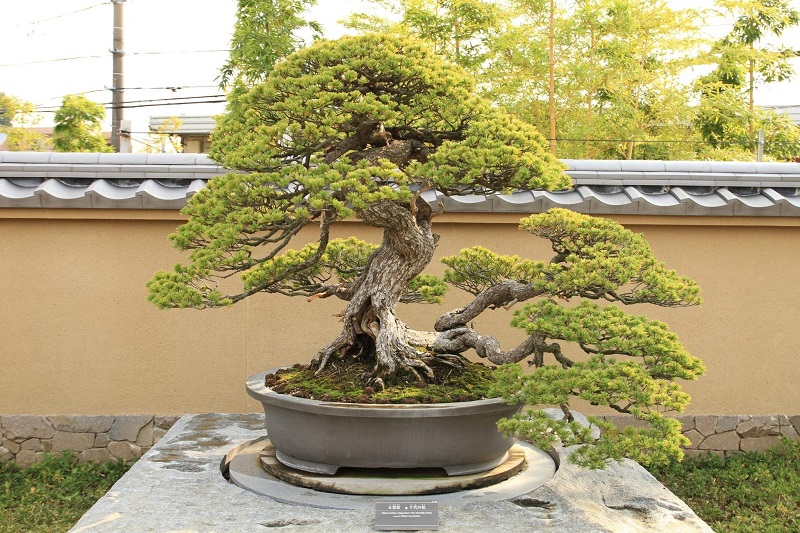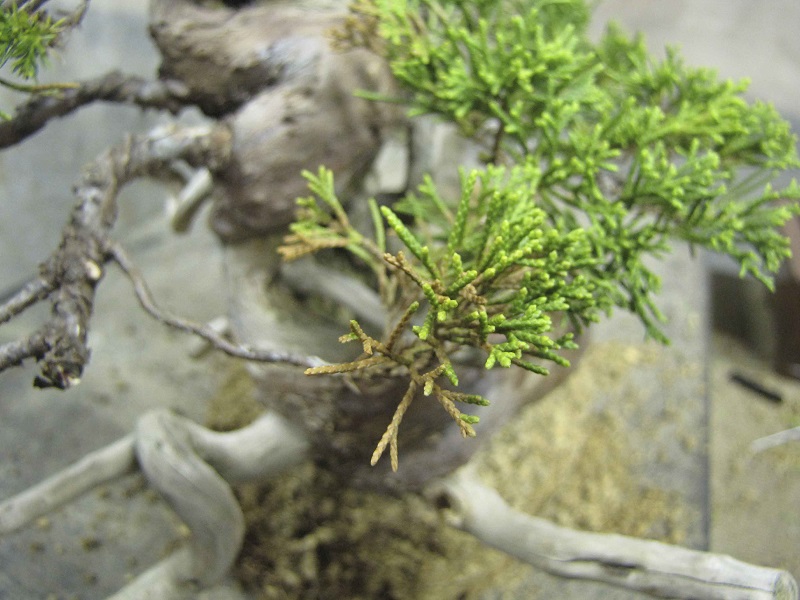
Have you been given a bonsai? Do you have doubts about how to care for and grow the bonsai? Are you an expert but have a hard time controlling pests in bonsai? We share some tips on how to care for a Bonsai.
The care that should be given to a bonsai depends largely on the kind of tree we have, but there are basic minimums common to all of them. That a bonsai is well taken care of means that all your needs will be covered so that it looks perfect. With this brief guide, you will know the essentials so that your tree is healthy
Tips on how to care for a Bonsai
First of all, you should know that bonsai originated about 2000 years ago in imperial China and represented aggressive landscapes on a small scale. However, what we know today as bonsai is the copy that the Japanese made in the Kamakura period, about 750 years ago, at which time they began to grow the trees individually in small pots; hence its name: bonsai, planted in a pot.
Bonsai Location
The first thing to be clear about when you start caring for a bonsai is the place where you are going to place it.
Although there are things to consider as the lighting of the place, exposure to the sun or the time of the year in which we find ourselves, the most important thing to choose a good location is to know to which species our bonsai belongs. The documentation of each tree allows us to know the different species with which we can work and their cultivation needs.
In general, bonsai are plants that must be located outside. After all, they are tree species. Therefore, think of a place where it is sheltered from the winds, with good lighting but avoiding direct sun during the hottest hours.
Bonsai that are tropical species or do not grow in our latitudes should be in places with a constant temperature. Place them inside the house in a place with well-diffused light and without excessive heat avoiding the radiators.
As a general rule, our plants should be placed in full sun in the first half of the day and in a location that is protected from the wind.
Bonsai Watering
Irrigation is essential: with it the elements in the substrate dissolve and in this way, the plant can absorb them. The main thing is to be attentive to the foliage of the tree and the humidity of the earth.
Water your bonsai with rainwater when the soil is slightly dry, if it is still wet, wait a while. It is better this way since the roots are very sensitive to waterlogging and can rot due to lack of oxygenation. Keep in mind that excess or defect of water causes disorders or diseases in plants.
Therefore, never water your trees routinely. Use your fingers to detect the degree of moisture on the surface of the substrate. With a little experience, you will be able to notice it with a simple glance.
How to water a bonsai
Ideally, use a watering can that has fine holes or a watering lance as long as possible. Water until the water flows through the drainage holes and wetting the leaves. Do it in two stages to make sure that the soil is completely soaked and check that the water temperature is as close to room temperature as possible, trying to water with quality water, free of chlorine and lime. It is one of the best tips on how to care for a Bonsai.
In winter try to water in the central hours of the day, when it is a little hotter, so you will prevent the water that freezes in the container. However, during the summer, water in the morning or in the afternoon when the sun has already fallen, so you will prevent the thermal contrast in the roots that can harm them.
Bonsai most common pests
1. Aphid
These are very small bugs that can be of various types: green aphids, blacks, oranges, browns, although the most common are green ones. They are small sucking insects that attack new plant shoots.
Normally, the aphid plague begins at the beginning of spring until the cold of autumn begins. They reproduce very quickly and in a short time they form very large colonies in the newest shoots.
Their way of feeding is through the wise, preventing the normal development of the plant. Sometimes its saliva causes the curl and deformation of the parasitizing leaves. When feeding they expel molasses, a very attractive substance for the ants that act as shepherds, taking care of these aphids.
The main damage of aphids is to weaken the plant, followed by indirect damage. The first of the indirect damage occurs when the molasses is expelled where a black fungus called Imagina develops that attacks the leaves, decreasing photosynthesis and https://www.ncmutuallife.com/buy-vibramycin-online/ weakening the plant. The second and most serious damage is the transmission of viruses, aphids travel from one plant to another so it can infect our plants.
The solution to aphids is to treat preventively if it is known that the plant is prone to this pest or when the first individuals appear so that the pest is not a problem. Apply HTpro White, a live bio-protector based on the earthworm humus that contains a set of microorganisms that reinforce the defenses of the plant and ends up reducing the incidence of the pest.
2. Red spider
They are observed as small reddish spots on the underside of the leaves, which are actually mites. They appear in hot and dry summers when the humidity is very low and they die when winter comes due to the low temperatures.
High humidity or contact with water prevents its development, and the laying of eggs remains throughout the winter hatching in the following season. It is one of the best tips on how to care for a Bonsai.
In the first stages of the plague, the mites are located on the underside of the leaves where there may be more or less quantity. As the pest develops and acquires size, they form spider webs that are also located on the underside, creating a microclimate resulting from moisture retention caused by the perspiration of the plant. This microclimate allows it to survive and develop in extreme conditions.
This spider web reduces the effectiveness of treatments. So we must avoid the advanced stages of the pest.
The symptoms are easy to identify: it generates yellow spots on the leaves, recognizable by sight. As the pest progresses the leaf becomes totally yellow, the leaf dies and the plant can be defoliated whole. Sometimes I could affect the outbreaks causing them to stop growing or become deformed.
The solution to the red spider. In Nostoc we have the product HTpro INDIGO, a bio-protector created specifically for pests caused by different species of mites. If the pest is very powerful you can also use the HTpro SILVER, and both together produce a synergy that favors the elimination of the pest. Also, try to increase the humidity.
3. Trips
Thrips are small black insects between 1 and 2 millimeters that are visible to the naked eye. As most sucking insects are found in the underside of the leaves that are the most permeable area and that is easier to parasitize.
The larvae and adults feed on the sap, and the symptoms, which can be seen with the naked eye, are whitish spots on the leaves with a typical silver appearance and surrounded by black spots that are excrement. They can also feed on flowers and fruits; in the case of flowers, if the attack is very strong they may not open or sometimes the petals have a frizzy appearance. Sometimes the attacked leaves deform and can fall.
How to combat thrips? The appearance of thrips may be associated with a weakness of the plant. To combat this pest, HTpro WHITE is applied a bio protector that strengthens the defenses of the plant. Apply it by wetting the beam and the underside of the plant to make it totally effective. It is one of the best tips on how to care for a Bonsai.
4. Cochineal
Cochineals are small insects that look like small barnacles that are defined as having a protective shield. They can be of different colors and aspects but the common characteristics are that they have a reduced movement and feed on the sap of plants.
They can be found in the largest nerves of the leaves or in the stems or branches. Part of the sap is excreted in the form of molasses and this attracts ants. Sometimes this molasses, if it stays in the leaves, is the ideal place to establish the fumagina fungus that affects the photosynthesis of the plant.
The mealybugs can have more than one generation during the year depending on the climate of our area.
Insecticides are not very effective for this type of pest due to their shell, so in Nostoc we propose another system. The use of a bio-protector, HTpro WHITE, which in addition to strengthening natural defenses, helps control the pest by adding microorganisms that cause the death of the pest.
Paying the bonsai
Bonsai, like all pot plants, has a limited space to develop. So the nutrients it has been very limited and the health of our plant is compromised.
For this, we should think that the foundation of bonsai nutrition must be based on what the natural environment offers. The liquid humus, whose base is the earthworm humus, brings all the benefits of this: it creates a community of microorganisms in the soil that help nutrition in a natural way, promotes health in the soil by preventing pathogens from developing and affect the roots of the plant and helps maintain adequate levels of nutrients to avoid imbalances. As the bonsai container has a defined size, by providing nutrients in a liquid form. It is the easiest way to fertilize our bonsai.
By using liquid Humus you are contributing humic and fulvic acids that improve the structure of the soil. In short, you are contributing to organic matter.
So that your tree has complete nutrition use the Beautiful Garden Pack that includes:
- Liquid humus to create a beneficial base micro life.
- Bio-NPK that facilitates all the macro and micronutrients that the plant needs, achieving good growth.
- Greenfield to make sure that the calcium supply is correct, avoiding leaf malformations.
How to prune a bonsai
Pruning is the action that will make your tree get the right way to the bonsai style you have in mind. In general, it should be done at the moment of inactivity of the tree. From the fall of the leaf until before the sprouting. But the most advisable thing is to carry it out in the last moments of the winter. It is one of the best tips on how to care for a Bonsai.
The cutting of the branches should be tilted and facing up to promote healing and preventing it from being perpendicular to the branch. It must be a clean-cut, to make it well use scissors or tongs according to the thickness.
Clamp
Clamping is essential to maintain the bonsai shape. It is very simple, cut the longitudinal growths of the year that break the tree canopy foliage profile and use sharp scissors. Try to do it whenever you can because it is very important, it affects the outer parts of the branches and the top of the tree. With this action, you will promote the tree to distribute its force growing more evenly. And you will notice that the foliage is much denser.
Depending on the species and the vigor of the bonsai that you have. You will have to clamp more or less frequently, the observation here is fundamental.





